News & Announcements
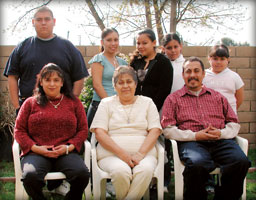 A Family Satisfied with FGDM, from the Famly Voices Video
A Family Satisfied with FGDM, from the Famly Voices Video
IIRP's sister organization and model restorative practices program, Community Service Foundation (CSF) is a nonprofit organization serving delinquent and dependent youth in eastern Pennsylvania since 1977. Recently, CSF completed this report on its FGDM program, which is highlighted on American Humane's "What's New" in FGDM web page.
First, here's a brief description of Family Group Decision Making from the FGDM Outcome Report:
What is a Family Group Decision Making Conference?
A family group decision making conference is a restorative approach to problem solving that involves children, family members, extended family, friends, interested individuals, professionals and invited community resources. A formal meeting is conducted that includes the child and all of the interested people who can support a plan concerning the child. During the meeting, the entire family group works together to create a plan that will be supported by the courts. These plans call for the family group to take responsibility for the child/family in need, with community resources in place to make this possible. It is important to define family loosely, including immediate family, family friends, grandparents, aunts, uncles, cousins, clergy and neighbors. FGDM is a family-centered, culturally competent, strengths-oriented and community-based approach. It recognizes that families have the most information about themselves to make well-informed decisions.
 University of San DiegoUniversity of San Diego's (USD) newspaper, The Vista, has a story by Libby Jelinek about a one-year pilot to establish a restorative justice program on campus. They will be using conferencing in the areas of student discipline and peace circles for working through issues that affect the larger school community.
University of San DiegoUniversity of San Diego's (USD) newspaper, The Vista, has a story by Libby Jelinek about a one-year pilot to establish a restorative justice program on campus. They will be using conferencing in the areas of student discipline and peace circles for working through issues that affect the larger school community.
The one-year pilot program will implement restorative justice conferencing and peace circles to find solutions for issues in the campus community. The restorative justice process focuses on three main goals: to empower, to educate and to build relationships. Throughout the program, students are involved and invested in the decision-making process. The most valuable aspect of restorative justice, according to Darling, is that students learn another way to handle conflict in their lives, such that bringing the offender and impacted parties together can develop what would otherwise be a negative relationship into a positive one.
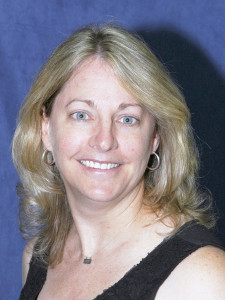 Dr. Carol Thomas, IIRP Assistant ProfessorIIRP Assistant Professor Dr. Carol Thomas recently had an article published in The Prevention Researcher entitled "Supporting the Grieving Adolescent: An Interview with a 21st Century Perspective." Thomas introduced the interview by writing:
Dr. Carol Thomas, IIRP Assistant ProfessorIIRP Assistant Professor Dr. Carol Thomas recently had an article published in The Prevention Researcher entitled "Supporting the Grieving Adolescent: An Interview with a 21st Century Perspective." Thomas introduced the interview by writing:
As individuals enter adolescence, they are confronted with a plethora of changes that occur all at once. Not only are they undergoing significant physical, emotional, and cognitive changes; they also grapple with developing a sense of independence and autonomy, struggle with the pressures of social acceptance and peer relationships, and are adjusting to sexually maturing bodies and accompanying feelings. Experiencing the death of a loved one during this already challenging time of life may leave adolescents confused, angry, or depressed.
Ted Wachtel's keynote from the 2011 European Congress on the Family Group Conference: Democratizing Help and Welfare in Utrecht, the Netherlands, October 19-21, 2011: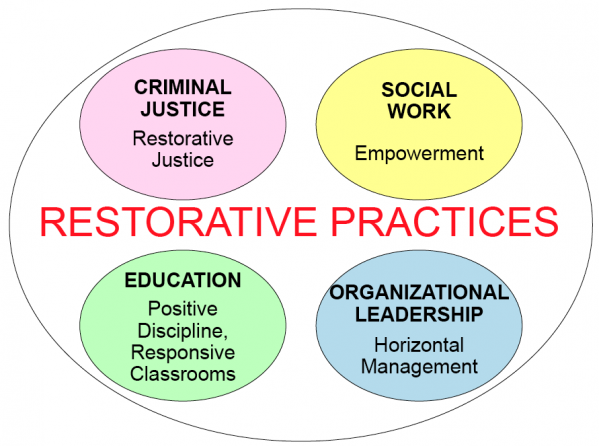
Restorative Practices: Creating a Unified Strategy for Democratizing Social Care, Education and Criminal Justice
I’d like to tell you about the first Family Group Conference story that I ever heard. I heard it in 1994 from an Australian police officer named Terry O’Connell. Terry was traveling around the world on a Winston Churchill Fellowship and he came to where I live in the U.S., in Pennsylvania. When he told this story I was deeply moved. It touched my heart. So much so that Terry said he remembered me because I was the person sitting in the front row with tears running down his cheeks.
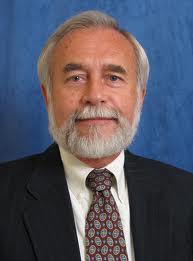 Dr. Tom Simek, IIRP Associate ProfessorIIRP Associate Professor Dr. Tom Simek contributed this piece about some changes to the IIRP's introductory courses. For those who have taken these classes, they might be interested to know about the changes. The changes will make it easier for people to get course credit and to take introductory courses if they live at a distance from the Bethlehem, Pennsylvania campus or if they participate in IIRP professional development events:
Dr. Tom Simek, IIRP Associate ProfessorIIRP Associate Professor Dr. Tom Simek contributed this piece about some changes to the IIRP's introductory courses. For those who have taken these classes, they might be interested to know about the changes. The changes will make it easier for people to get course credit and to take introductory courses if they live at a distance from the Bethlehem, Pennsylvania campus or if they participate in IIRP professional development events:
"A number of exciting changes will be taking place regarding the three introductory courses FN501, FN502, and FN503. If you have already attended both the 'Introduction to Restorative Practices' and 'Using Circles Effectively' professional development events, you can earn 1-credit tuition free by registering and completing a written reflection paper emailed to your instructor. This 1-credit course, FN501 has been renamed Basic Restorative Practices: (Part I). This is retroactive to January, 2009.
 KCY CBS 12, THE MORNING CALL / October 11, 2011This heart-wrenching story involving the traffic death and serious injury to a couple from a community near IIRP's Graduate School in Bethlehem, Pennsylvania, impacts a number of IIRP employees and friends. The message conveyed by the adult children of the victims to the driver of the car that so damaged their family is astounding:
KCY CBS 12, THE MORNING CALL / October 11, 2011This heart-wrenching story involving the traffic death and serious injury to a couple from a community near IIRP's Graduate School in Bethlehem, Pennsylvania, impacts a number of IIRP employees and friends. The message conveyed by the adult children of the victims to the driver of the car that so damaged their family is astounding:
"We know you made an extremely bad decision, and we are sure it is painful for you to think about.
"God knows, we have all taken risks on the road doing far worse maneuvers without any repercussions.
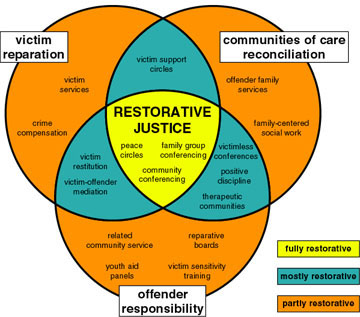 Restorative Practices TypologyHere's a visual presentation from a paper presented by Paul McCold and Ted Wachtel at the XIII World Congress of Criminology, August 10-15, 2003 in Rio de Janeiro. The chart above and text below describe how three primary stakeholders – victims, offenders and communities of care – must all be included in a process for it to be considered fully restorative. If some but not all of those stakeholders are included, the process may be partially restorative. Comments?
Restorative Practices TypologyHere's a visual presentation from a paper presented by Paul McCold and Ted Wachtel at the XIII World Congress of Criminology, August 10-15, 2003 in Rio de Janeiro. The chart above and text below describe how three primary stakeholders – victims, offenders and communities of care – must all be included in a process for it to be considered fully restorative. If some but not all of those stakeholders are included, the process may be partially restorative. Comments?
Finally, here in part 3 are IIRP president Ted Wachtel's brief remarks Sunday, in which he calls for a "restorative revolution." We welcome comments and discussion on this theme.
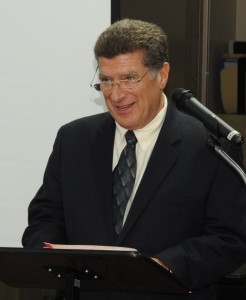 Ted Wachtel delivering remarks at IIRP accreditation celebrationThanks. Thanks to Dr. Brosnan for his kind words. Thanks to all of the staff who put together this event. And thanks to all of you for coming. I want to speak very briefly about the mission of the IIRP: to improve human behavior and civil society.
Ted Wachtel delivering remarks at IIRP accreditation celebrationThanks. Thanks to Dr. Brosnan for his kind words. Thanks to all of the staff who put together this event. And thanks to all of you for coming. I want to speak very briefly about the mission of the IIRP: to improve human behavior and civil society.
The industrial revolution of the last two centuries brought us dramatic improvements in technology and made us very powerful. But it seems that our technological skills have outpaced our social skills. We still struggle with managing conflict. And restorative practices has the potential to help.
Here's the second speech in this series of remarks delivered at the International Institute for Restorative Practices Accreditation Celebration, held Sunday, October 20, 2011. Joseph Brosnan, President of Delaware Valley College, spoke about IIRP and founding president Ted Wachtel's vision to change the world.
 Dr. Joseph Brosnan delivering remarks at the IIRP Accreditation CelebrationGood afternoon. I’d like to thank the International Institute for Restorative Practices for inviting me to this celebration today. I’m honored to be here. It is always a great and rare day when an institution receives its original accreditation from the Middle States Commission on Higher Education. The entire team at the IIRP deserves credit, but special thanks must go to your founder and president, an early pioneer and ceaseless advocate of restorative practices, Ted Wachtel. We are here today because of his persistence, his patience and his profound belief in an idea.
Dr. Joseph Brosnan delivering remarks at the IIRP Accreditation CelebrationGood afternoon. I’d like to thank the International Institute for Restorative Practices for inviting me to this celebration today. I’m honored to be here. It is always a great and rare day when an institution receives its original accreditation from the Middle States Commission on Higher Education. The entire team at the IIRP deserves credit, but special thanks must go to your founder and president, an early pioneer and ceaseless advocate of restorative practices, Ted Wachtel. We are here today because of his persistence, his patience and his profound belief in an idea.
 On Sunday afternoon, October 16, 2011 the International Institute for Restorative Practices hosted a celebration at its Bethlehem, Pennsylvania campus to acknowledge its accreditation by the Middle States Commission on Higher Education. The event was attended by students, faculty, alumni, administration, board members and friends of IIRP, and underwritten by Grim, Biehn and Thatcher law offices.
On Sunday afternoon, October 16, 2011 the International Institute for Restorative Practices hosted a celebration at its Bethlehem, Pennsylvania campus to acknowledge its accreditation by the Middle States Commission on Higher Education. The event was attended by students, faculty, alumni, administration, board members and friends of IIRP, and underwritten by Grim, Biehn and Thatcher law offices.
Over the next three days I'll be posting the speeches that were delivered Sunday, starting today with remarks by 2010 alumna, Sharon Mast:
